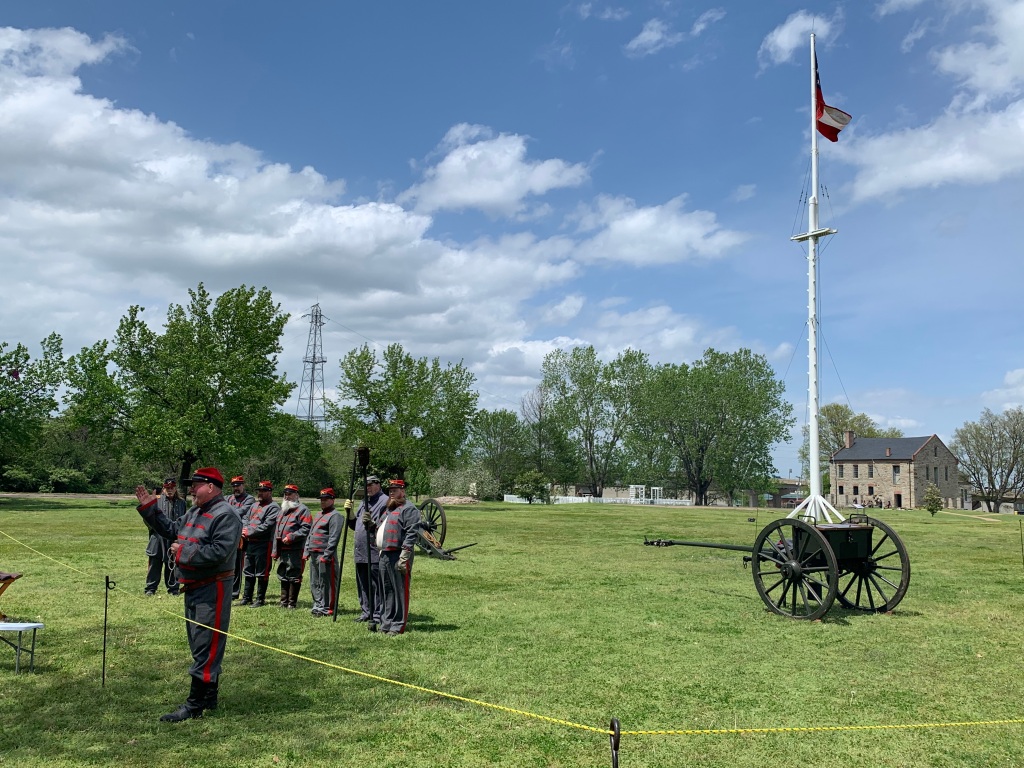
The Arkansas River connects the Mississippi River to the Santa Fe Trail in Kansas, so the fort facilitated Native American removals along the Trail of Tears. The courthouse here dealt with many cases of serially displaced tribes. This was the base for US Marshals to “control disputes” and arrest whiskey traders out in Indian Native American Territory. The jail here was known as “hell on earth”.
There weren’t any major Civil War conflicts here, as the Union abandoned it at the beginning and the confederacy did the same two years later. Native Americans regiments were formed on both sides during the war, and Cherokee engaged Union troops north of the fort at Pea Ridge. It was at this fort in 1865 when the US informed the tribes that they were all enemy combatants, regardless of which side they had been on or whether they were one of the five “civilized” tribes that had largely integrated, and that all the tribes lost the Civil War. The slaves were freed, but the Native Americans again lost their land and still had no rights.
Despite the lack of Civil War battles here, there are no lack of Civil War reenactments here. Although the park service does not allow battles to be reenacted on park property, the folks above demonstrated by firing the cannon, while women separately participated in gentler “living history” nearby. That anyone would want to reenact such a dark and tragic history, especially when it glorifies and perpetuates the immoral beliefs of the traitorous pro-slavery side, is living proof that the ugly racism of our past still continues today.
Pingback: All Parks in the Southwest, Zero Carbon | Zero Carbon Travel
Pingback: Trail of Tears National Historic Trail | Zero Carbon Travel
Pingback: Butterfield Overland & Pony Express National Historic Trails | Zero Carbon Travel
Pingback: Road to Abolition | Zero Carbon Travel